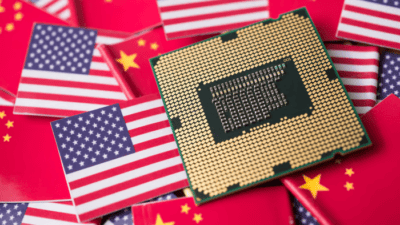This article was originally published on Fool.com. All figures quoted in US dollars unless otherwise stated.
As 2022 starts to close, it's only natural for investors to start peeking toward 2023. So far in 2022, the indexes have fared pretty miserably, with the Nasdaq-100 down 29% and the S&P 500 down 17%. Which one will have a better 2023?
Let's look at these indexes and their makeups and find out which is more likely to have a better 2023 ahead.
The indexes are highly concentrated on the top
At the top, the indexes have a lot of overlap.
| Company | Makeup of S&P 500 |
|---|---|
| Apple | 6.86% |
| Microsoft | 5.43% |
| Alphabet* | 3.34% |
| Amazon | 2.53% |
| Berkshire Hathaway | 1.67% |
Data source: Slickcharts. Data as of Nov. 19. *Note: Both Alphabet class shares combined.
| Company | Makeup of Nasdaq-100 |
|---|---|
| Apple | 13.63% |
| Microsoft | 10.15% |
| Alphabet* | 6.74% |
| Amazon | 5.44% |
| Tesla | 3.20% |
Data source: Slickcharts. Data as of Nov. 19. *Note: Both Alphabet class shares combined.
As you can see, Apple, Microsoft, Amazon, and Alphabet make up a considerable chunk of these indexes. In the S&P 500, they account for 19.83%. It's basically double for the Nasdaq-100, with that group making up 39.16% of the index. It's pretty straightforward: How these companies do will significantly steer how the overall index does.
While these three are tech-focused, they compete in different markets. Both Apple and Amazon are a good measure of the pulse of the consumer, as their sales are highly affected by consumer sentiment. If inflation cools, and consumers don't need to worry about rising grocery prices or housing costs, they may treat themselves to the latest device.
Alphabet and Microsoft are business-focused, but for different reasons. Alphabet's primary revenue stream is advertising, and many clients have pulled back their spending levels in 2022 due to the uncertain business environment. If the outlook improves, expect this revenue to return. Microsoft's cloud business and Office product suite indicate how willing businesses are to spend on their infrastructure, but Microsoft's consumer product division also indicates how individuals are doing.
If the consumer gets stronger and business outlook improves, these four will boom. If that's the case, then the Nasdaq-100 will likely have a better year because it is concentrated in companies that will benefit the most. But if 2023 brings an economic recession, the S&P 500's diversity will help it to outperform the Nasdaq-100.
The companies outside the top five are very different
For the S&P 500, when you move out of the top five, the companies become much more diverse.
| Company | Makeup of S&P 500 |
|---|---|
| Tesla | 1.47% |
| United Health Group |
1.45% |
| ExxonMobil |
1.42% |
| Johnson & Johnson |
1.39% |
| Nvidia | 1.18% |
Data source: Slickcharts. Data as of Nov. 19.
Now, there are industrials, healthcare, and energy sectors represented, giving the index some much-needed balance. Looking at the top 20 reveals even more diversity, with financials, energy, and healthcare rounding the index out.
This is far from the case for the Nasdaq-100.
| Company | Makeup of Nasdaq-100 |
|---|---|
| Nvidia | 3.09% |
| PepsiCo | 2.32% |
| Costco Wholesale | 2.16% |
| Meta Platforms |
2.14% |
| Broadcom | 1.94% |
Data source: Slickcharts. Data as of November 19. Note: Both Alphabet class shares combined.
Besides Pepsi and Costco, these companies are more in the tech sector. But, unlike the S&P 500, it doesn't get much better outside the top 10, with most of the top 20 consisting of chipmakers, communication companies, and software businesses. Now, this probably isn't a surprise because the media often refers to this index as the "tech-heavy Nasdaq."
Still, tech businesses don't do well if the economy is struggling.
Does that mean you should write the Nasdaq-100 off? Absolutely not. Tech stocks tend to do very well in the recovery phases of a recession. Plus, the stock market is forward-looking, and stocks usually tend to do better during a recession than leading up to one.
That last tidbit of information should keep investors in the market, especially now with a recession, or at least an economic slowdown, imminent. However, if you're trying to decide which index to buy, you need to utilize the 2023 outlook. If you think 2023 will be a repeat of 2022, then the S&P 500 is the better choice. On the other hand, if you believe the economy will begin to recover and the Federal Reserve eases its interest rate hikes, then the Nasdaq-100 is the place to be.
One last point: There's nothing wrong with owning both indexes if you don't know what 2023 will bring. Personally, I think this is an intelligent strategy, as it gives investors the upside of recovery and the safety of a balanced investment.
This article was originally published on Fool.com. All figures quoted in US dollars unless otherwise stated.








